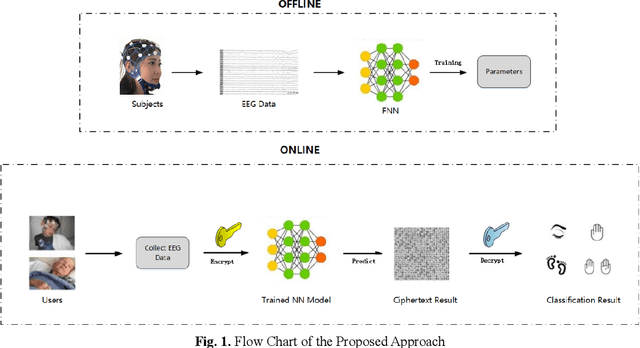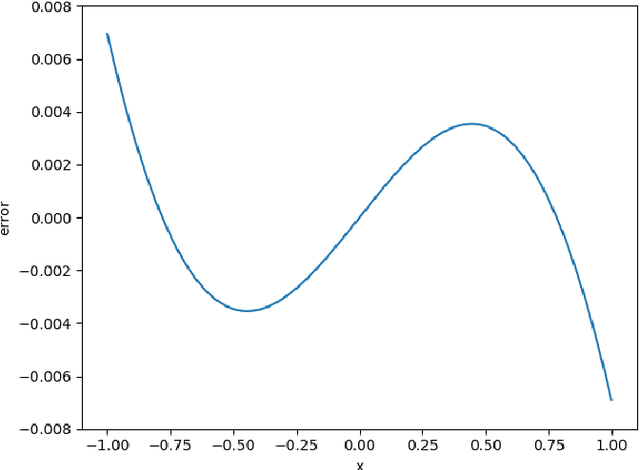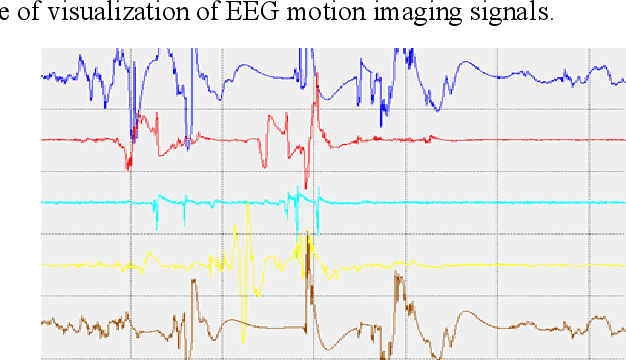Reza Malekian
Personalized fall detection monitoring system based on learning from the user movements
Dec 21, 2020



Abstract:Personalized fall detection system is shown to provide added and more benefits compare to the current fall detection system. The personalized model can also be applied to anything where one class of data is hard to gather. The results show that adapting to the user needs, improve the overall accuracy of the system. Future work includes detection of the smartphone on the user so that the user can place the system anywhere on the body and make sure it detects. Even though the accuracy is not 100% the proof of concept of personalization can be used to achieve greater accuracy. The concept of personalization used in this paper can also be extended to other research in the medical field or where data is hard to come by for a particular class. More research into the feature extraction and feature selection module should be investigated. For the feature selection module, more research into selecting features based on one class data.
Exploring the weather impact on bike sharing usage through a clustering analysis
Aug 17, 2020



Abstract:Bike sharing systems (BSS) have been a popular traveling service for years and are used worldwide. It is attractive for cities and users who wants to promote healthier lifestyles; to reduce air pollution and greenhouse gas emission as well as improve traffic. One major challenge to docked bike sharing system is redistributing bikes and balancing dock stations. Some studies propose models that can help forecasting bike usage; strategies for rebalancing bike distribution; establish patterns or how to identify patterns. Other studies propose to extend the approach by including weather data. This study aims to extend upon these proposals and opportunities to explore how and in what magnitude weather impacts bike usage. Bike usage data and weather data are gathered for the city of Washington D.C. and are analyzed using k-means clustering algorithm. K-means managed to identify three clusters that correspond to bike usage depending on weather conditions. The results show that the weather impact on bike usage was noticeable between clusters. It showed that temperature followed by precipitation weighted the most, out of five weather variables.
Classification and Recognition of Encrypted EEG Data Neural Network
Jun 15, 2020



Abstract:With the rapid development of Machine Learning technology applied in electroencephalography (EEG) signals, Brain-Computer Interface (BCI) has emerged as a novel and convenient human-computer interaction for smart home, intelligent medical and other Internet of Things (IoT) scenarios. However, security issues such as sensitive information disclosure and unauthorized operations have not received sufficient concerns. There are still some defects with the existing solutions to encrypted EEG data such as low accuracy, high time complexity or slow processing speed. For this reason, a classification and recognition method of encrypted EEG data based on neural network is proposed, which adopts Paillier encryption algorithm to encrypt EEG data and meanwhile resolves the problem of floating point operations. In addition, it improves traditional feed-forward neural network (FNN) by using the approximate function instead of activation function and realizes multi-classification of encrypted EEG data. Extensive experiments are conducted to explore the effect of several metrics (such as the hidden neuron size and the learning rate updated by improved simulated annealing algorithm) on the recognition results. Followed by security and time cost analysis, the proposed model and approach are validated and evaluated on public EEG datasets provided by PhysioNet, BCI Competition IV and EPILEPSIAE. The experimental results show that our proposal has the satisfactory accuracy, efficiency and feasibility compared with other solutions.
Human Activity Recognition Using LSTM-RNN Deep Neural Network Architecture
May 02, 2019



Abstract:Using raw sensor data to model and train networks for Human Activity Recognition can be used in many different applications, from fitness tracking to safety monitoring applications. These models can be easily extended to be trained with different data sources for increased accuracies or an extension of classifications for different prediction classes. This paper goes into the discussion on the available dataset provided by WISDM and the unique features of each class for the different axes. Furthermore, the design of a Long Short Term Memory (LSTM) architecture model is outlined for the application of human activity recognition. An accuracy of above 94% and a loss of less than 30% has been reached in the first 500 epochs of training.
Human Activity Recognition Using Visual Object Detection
May 02, 2019



Abstract:Visual Human Activity Recognition (HAR) and data fusion with other sensors can help us at tracking the behavior and activity of underground miners with little obstruction. Existing models, such as Single Shot Detector (SSD), trained on the Common Objects in Context (COCO) dataset is used in this paper to detect the current state of a miner, such as an injured miner vs a non-injured miner. Tensorflow is used for the abstraction layer of implementing machine learning algorithms, and although it uses Python to deal with nodes and tensors, the actual algorithms run on C++ libraries, providing a good balance between performance and speed of development. The paper further discusses evaluation methods for determining the accuracy of the machine-learning and an approach to increase the accuracy of the detected activity/state of people in a mining environment, by means of data fusion.
Modeling Based on Elman Wavelet Neural Network for Class-D Power Amplifiers
Sep 12, 2013



Abstract:In Class-D Power Amplifiers (CDPAs), the power supply noise can intermodulate with the input signal, manifesting into power-supply induced intermodulation distortion (PS-IMD) and due to the memory effects of the system, there exist asymmetries in the PS-IMDs. In this paper, a new behavioral modeling based on the Elman Wavelet Neural Network (EWNN) is proposed to study the nonlinear distortion of the CDPAs. In EWNN model, the Morlet wavelet functions are employed as the activation function and there is a normalized operation in the hidden layer, the modification of the scale factor and translation factor in the wavelet functions are ignored to avoid the fluctuations of the error curves. When there are 30 neurons in the hidden layer, to achieve the same square sum error (SSE) $\epsilon_{min}=10^{-3}$, EWNN needs 31 iteration steps, while the basic Elman neural network (BENN) model needs 86 steps. The Volterra-Laguerre model has 605 parameters to be estimated but still can't achieve the same magnitude accuracy of EWNN. Simulation results show that the proposed approach of EWNN model has fewer parameters and higher accuracy than the Volterra-Laguerre model and its convergence rate is much faster than the BENN model.
 Add to Chrome
Add to Chrome Add to Firefox
Add to Firefox Add to Edge
Add to Edge